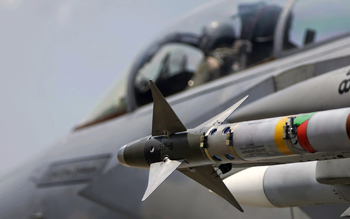Oct 11: The ISIS, plaguing many countries in West Asia, made a symbolic assertion during Haj too. At the ritual stoning of the devil at Mina, five kilometres to the East of Mecca, fluttered a black banner of the Islamic State (IS). The police said nothing.
 Recently, The Independent in London published an article giving a clue to ordinary Saudi reaction to IS. Patrick Cockburn, the writer, has cited a study done by Fouad Khadem of the Centre of Academic Shia Studies in London.
Recently, The Independent in London published an article giving a clue to ordinary Saudi reaction to IS. Patrick Cockburn, the writer, has cited a study done by Fouad Khadem of the Centre of Academic Shia Studies in London.
Public discussions on sensitive issues are not permitted in Saudi Arabia. Tweeting therefore has become a common vehicle to sustain debates.
The messages Saudis have been sharing on the Islamic State are fascinating.
When IS swept through northern Iraq and eastern Syria, Mania bin Nasir al-Mani was pleased. "The great land of Allah belongs neither to Kings nor nations. Those who deserve the Caliphate are those who implement the Sharia of Allah on earth and on people. Apostates and traitors deserve nothing but the sword." Later, al Mani joined the IS in Syria.
One Azfar Minfard declared: "No need for IS to enter - our country is full of them (IS)." Fata al Arab was more emphatic: "IS is on the Saudi borders, and its supporters inside Saudi Arabia are more than its organized members and armed fighters."
A revealing tweet came from Adil al-Kalbany, a Wahabi Shaikh, who has for years led prayers as an Imam of the Holy Shrine in Mecca. "IS is a Salafi (fundamentalist) offshoot - a reality we should confront with transparency."
As soon as President Barack Obama announced the coalition of the willing to wage war against IS, Saudi Arabia, Bahrain, Kuwait, Qatar, the UAE and Jordan instantly signed up. The next country had to seek permission from parliament before it joined - Great Britain, but only to bomb IS in Iraq. Strange, isn't it?
The tardiness with which the coalition of willing nations is being erected contrasts sharply with the speed with which non-state actors have come together as ISIS - a hodge-podge of Islamists, ex-Baathists
turned-deeply religious in their marginalized distress, Naqshbandi Sufis, Muslim Brothers, Salafists, Al Qaeda, Jabat al Nusra, everyone without exception opposed to Islamic monarchies.
One would have thought that Morocco is not prominent in the coalition of the willing because Rabat considers itself remote from the IS theatre. The monarchy woke up with a start the other morning when its security forces, in a coordinated action with Spain, busted an IS recruitment cell.
While the cumulative power of all the elements in the IS are focussed on monarchies, principally Saudi Arabia, elements in the IS have independent scores to settle with regimes in Baghdad, Ankara and sub-groups fighting the central authority in these states.
The IS, which mutated from the civil war in Syria, first identified groups seething with local anger. The famous occupation of Mosul, which boosted the prestige of the IS as a formidable force, would not have been possible without painstaking groundwork.
Abu Bakr al Baghdadi was able to find an ally at the highest echelons of the Nineveh province. Mosul is its capital. The Governor, Atheel Nujaifi, handed over the keys of Mosul to al Baghdadi, an act of splendid treachery. He arranged for a most orderly takeover of Mosul by the Caliphate.
Nujaifi had longstanding grievances. He had for years been trying to carve out Mosul as a Sunni dominated city surrounded by Kurds including 350,000 of a minority tribe called the Yazidis.
Mosul and Erbil happen to be just a little north of the 36th parallel beyond which Western Forces had established a security zone after the first Gulf war to encourage Kurdish refugees to return to Iraq.
This exactly is what Nujaifi was seething with rage about. He handed over the battle to the IS. This one move created turbulence in the Kurdish north of Iraq which the Americans had tranquilized with a No Fly Zone during Saddam's rule.
The alacrity with which Obama announced air strikes against the IS was to protect assets in Kurdish Iraq where Israelis, Turks and Americans have been doing reasonable business in recent decades. The swiftness with which the Gulf Sheikhs lined up dictated the next American priority.
Saudi Arabia had to be protected. Without a strong Saudi Arabia in the region, Israel would be a lonesome presence. That is why the US is talking of "decades" long presence in the region. Whatever else the IS may do they must not lurch towards Saudi Arabia. The US will stand at the gate like supreme bouncers. But an extended US stay will create the inevitable political backlash - exponential anti-Americanism.
Shias from Mosul clambered on to their cars and trucks and drove 450 km to Karbala and Najaf. Between these two pilgrim centres, the 120-km route is lined by big halls as halting stations for pilgrims. These are tearing at the seams with Shia refugees who do not know where to turn for help since there is very little government on view in Baghdad. The "all inclusive" government of Haider al Abadi is, on the face of it, not governing.
Meanwhile, Prime Minister Tayyip Erdogan of Turkey is scripting his own tragedy of indecision, rather like the Prince of Denmark. Everyone in the region, without exception, is keeping one's fingers crossed.





Comments
Add new comment